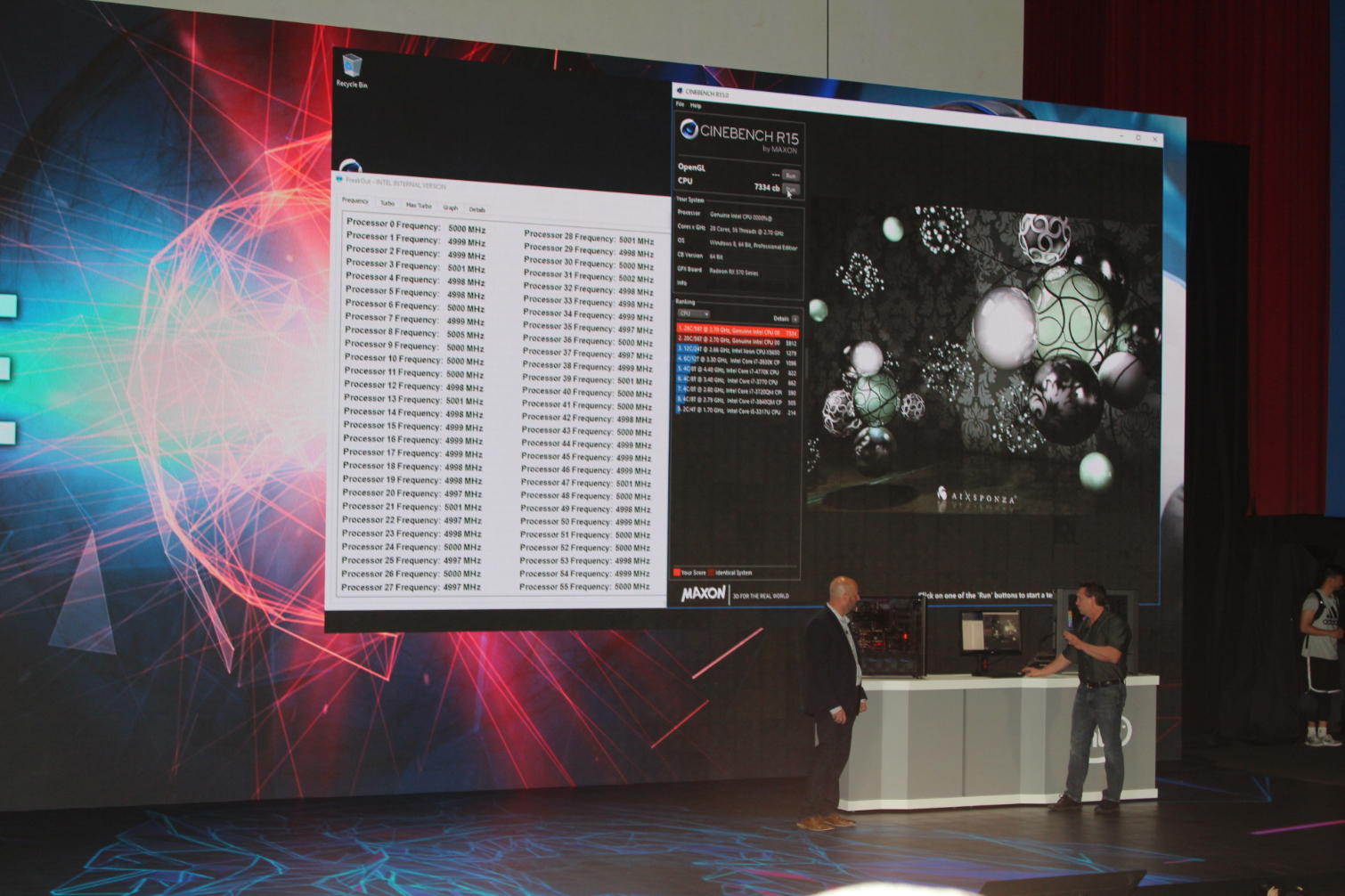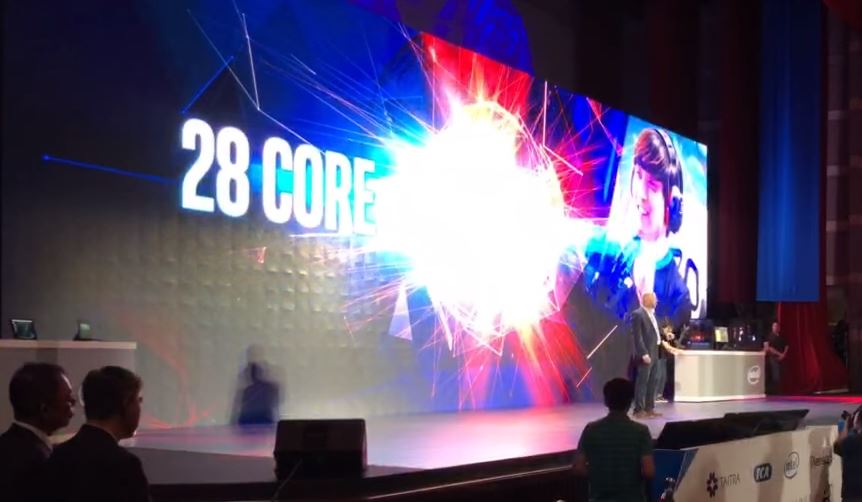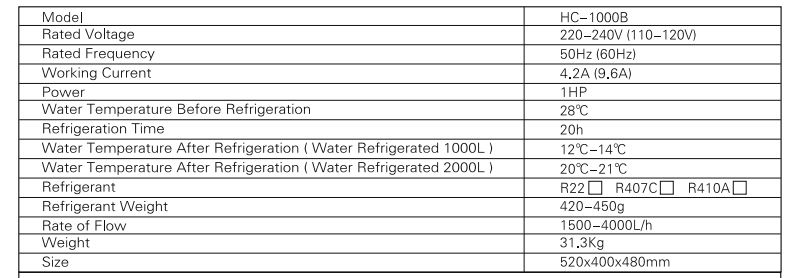Intel: We 'Forgot' to Mention 28-Core, 5-GHz CPU Demo Was Overclocked
Intel's recent demonstration of a 28-core processor running at 5GHz has certainly stirred the pot here at Computex, particularly because the presentation appeared to imply this would be a shipping chip with a 5.0GHz stock speed. Unfortunately, it turns out that Intel overclocked the 28-core processor to such an extreme that it required a one-horsepower industrial water chiller. That means it took an incredibly expensive (not to mention extreme) setup to pull off the demo. You definitely won't find this type of setup on a normal desktop PC.
We met with the company last night, and while Intel didn't provide many details, a company representative explained to us that "in the excitement of the moment," the company merely "forgot" to tell the crowd that it had overclocked the system. Intel also said it isn’t targeting the gaming crowd with the new chip.
The presentation did take place in front of a crowd of roughly a hundred journalists and a few thousand others, not to mention a global livestream with untold numbers watching live, so perhaps nerves came into play. In the end, Intel claims the whole fiasco is merely the result of a flubbed recitation of pre-scripted lines, with the accidental omission of a single word: "Overclocked." Maybe that's the truth, but there's a lot of room for debate considering how convenient an omission this is.
Intel's Gregory Bryant began the demo by explaining that the company is working to bring the new chip to market in Q4 of this year, saying, "Without further ado, I would like to present to you a new 28-core processor."
At the end of the demo, which focused heavily on the performance benefits of the 5GHz clock speed, Bryant said, "What’s amazing is that trade-off, this actually being a 5GHz in single-threaded performance frequency and not...having to sacrifice that for this kind of multi-threaded performance, so you've got kind of the best of both worlds. So, you guys want to see us productize that thing? Tell you what, we'll bring that product to market in Q4 this year, and you'll be able to get it."
It's easy to see how some journalists, especially the less tech-savvy ones, could assume that Intel had designed a new 28-core CPU that defies the laws of physics. Given our experience with Intel's other high core count models, we immediately suspected that the processor was not running at out-of-the-box settings. We know that Intel's new 10nm process is delayed until possibly late 2019, and pushing a 28-core CPU based on the existing 14nm++ process to 5GHz at stock settings (not to mention on all cores) is simply not feasible.
We were in the crowd live blogging the presentation, but unfortunately, we weren't close enough to the stage to analyze the test system closely. We reported our suspicions that the company had overclocked the processor, and after the event, we scrutinized the YouTube video and noticed several large insulated tubes coming from the rear of the system (circled in the image above). This is a telltale sign of some type of sub-ambient cooling, such as an expensive liquid chiller or a phase change unit. These units are used to cool the processor to extremely low temperatures, thus allowing it to reach higher clock speeds.
Get Tom's Hardware's best news and in-depth reviews, straight to your inbox.
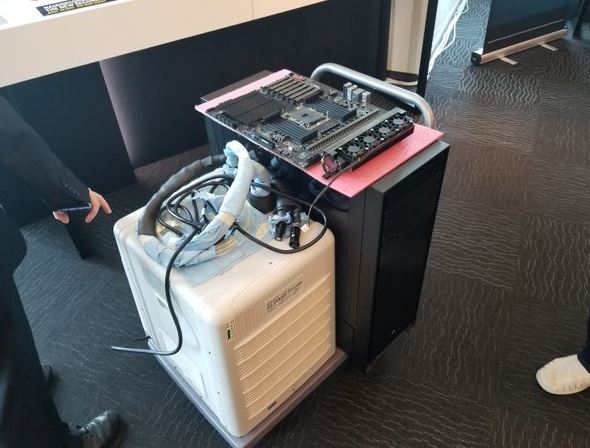

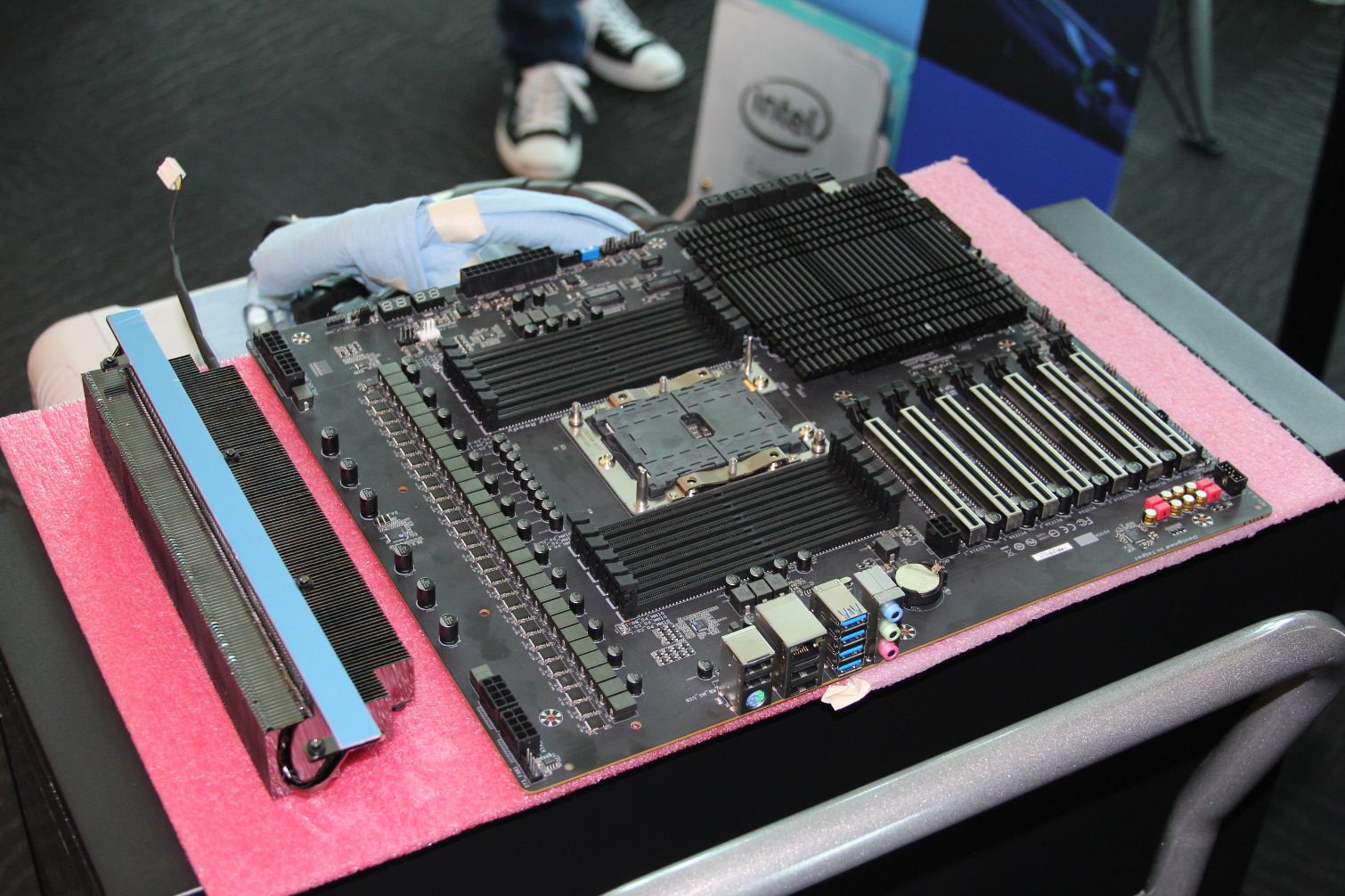
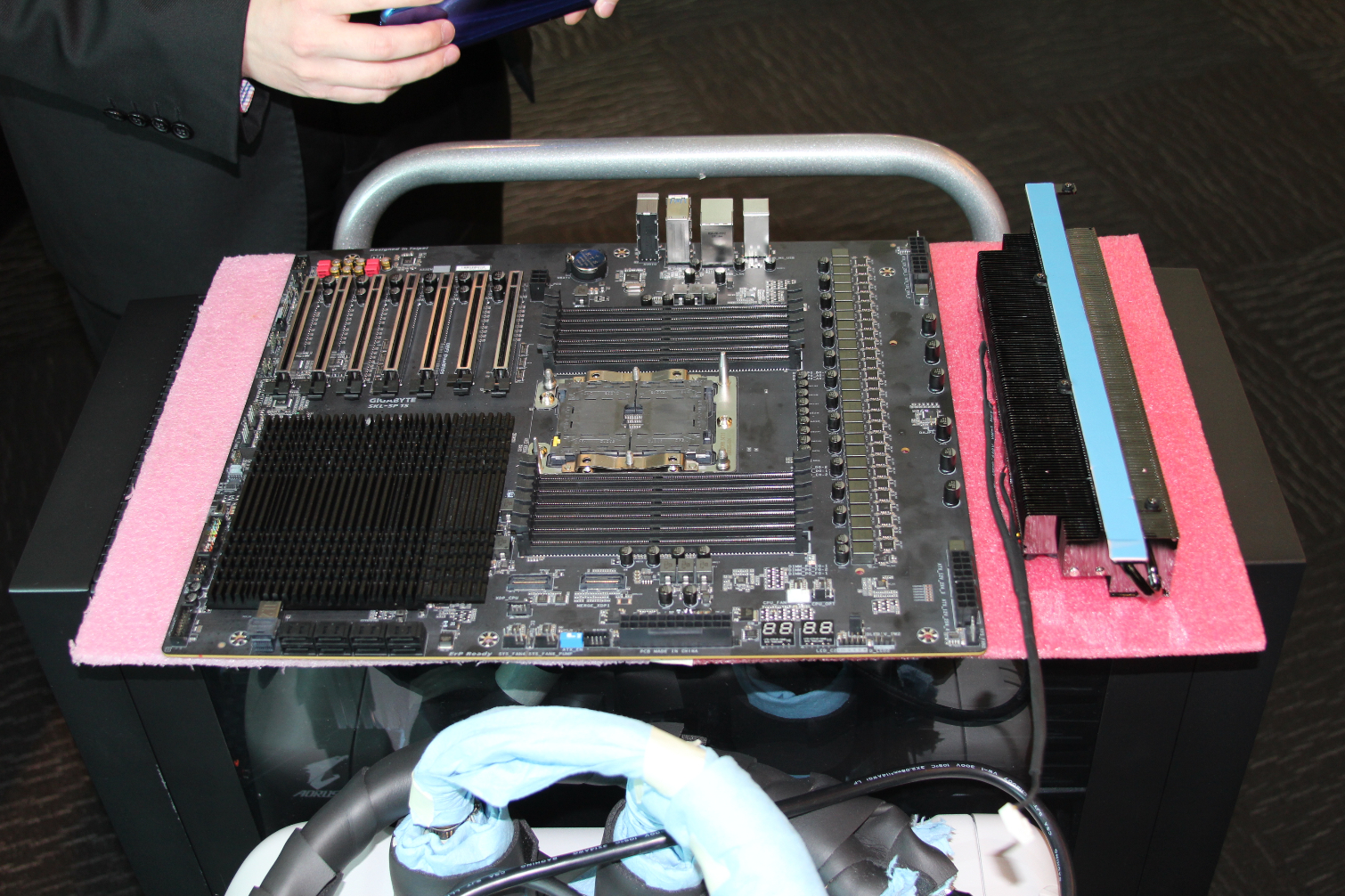
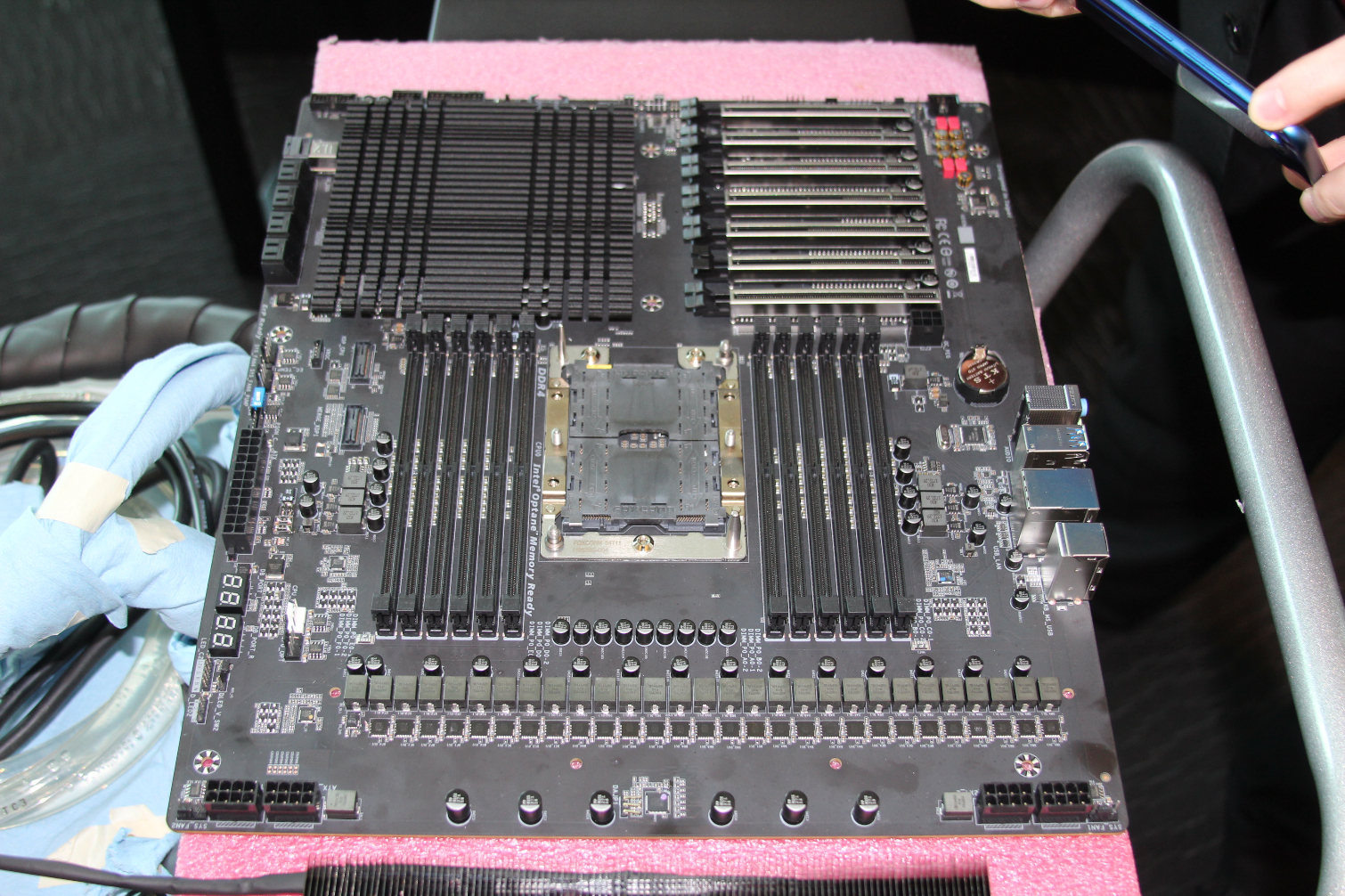

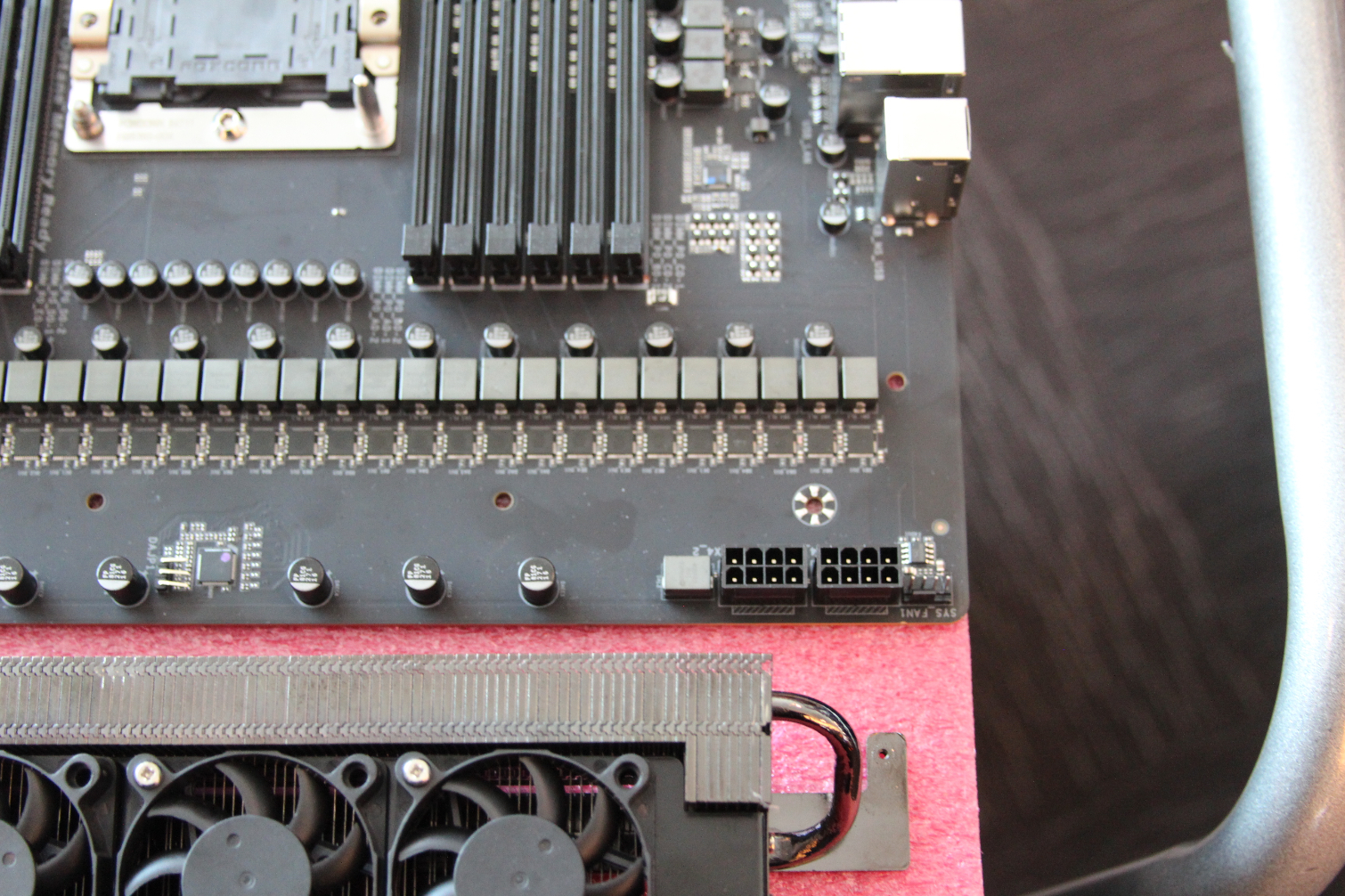
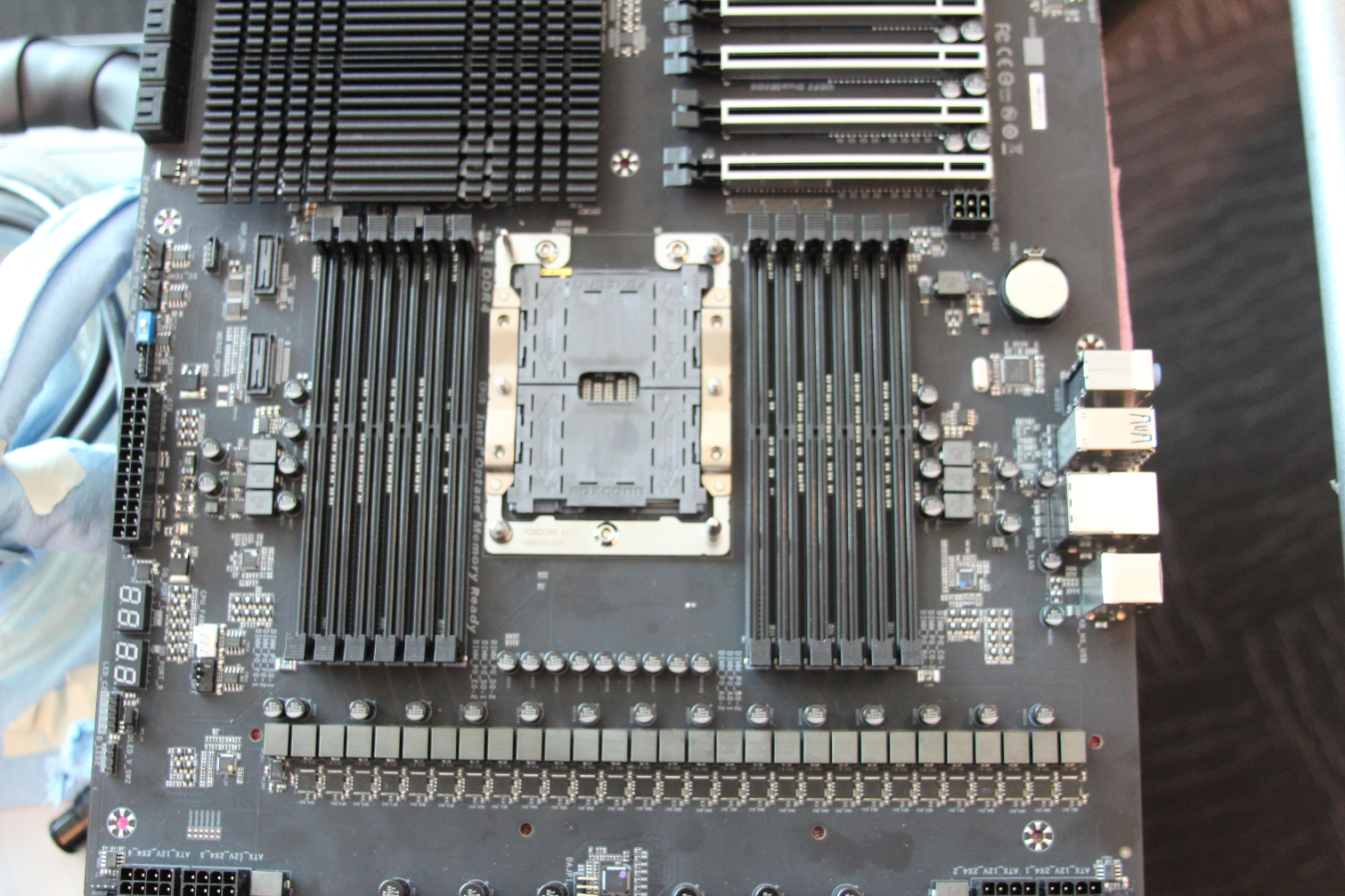

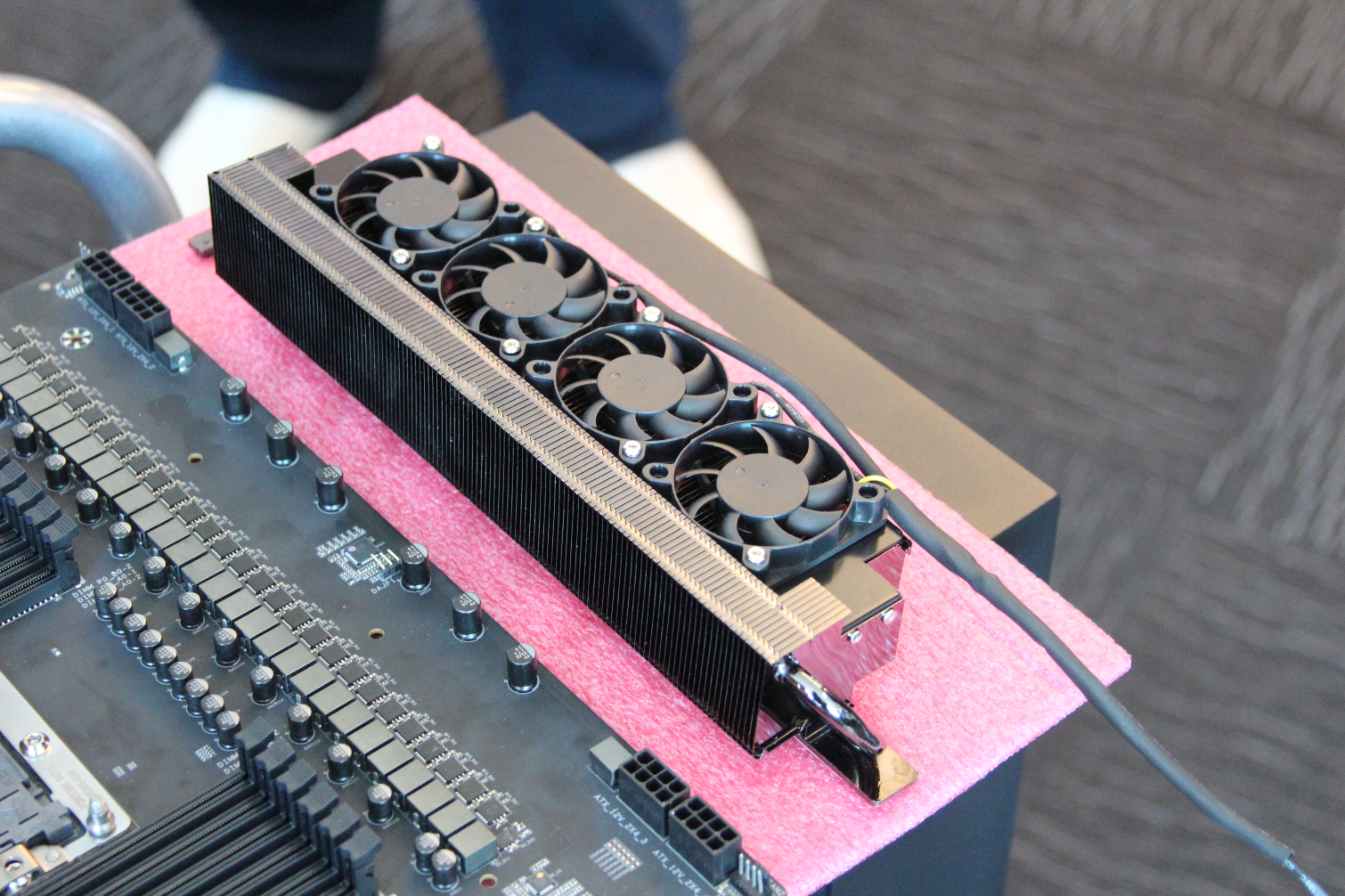
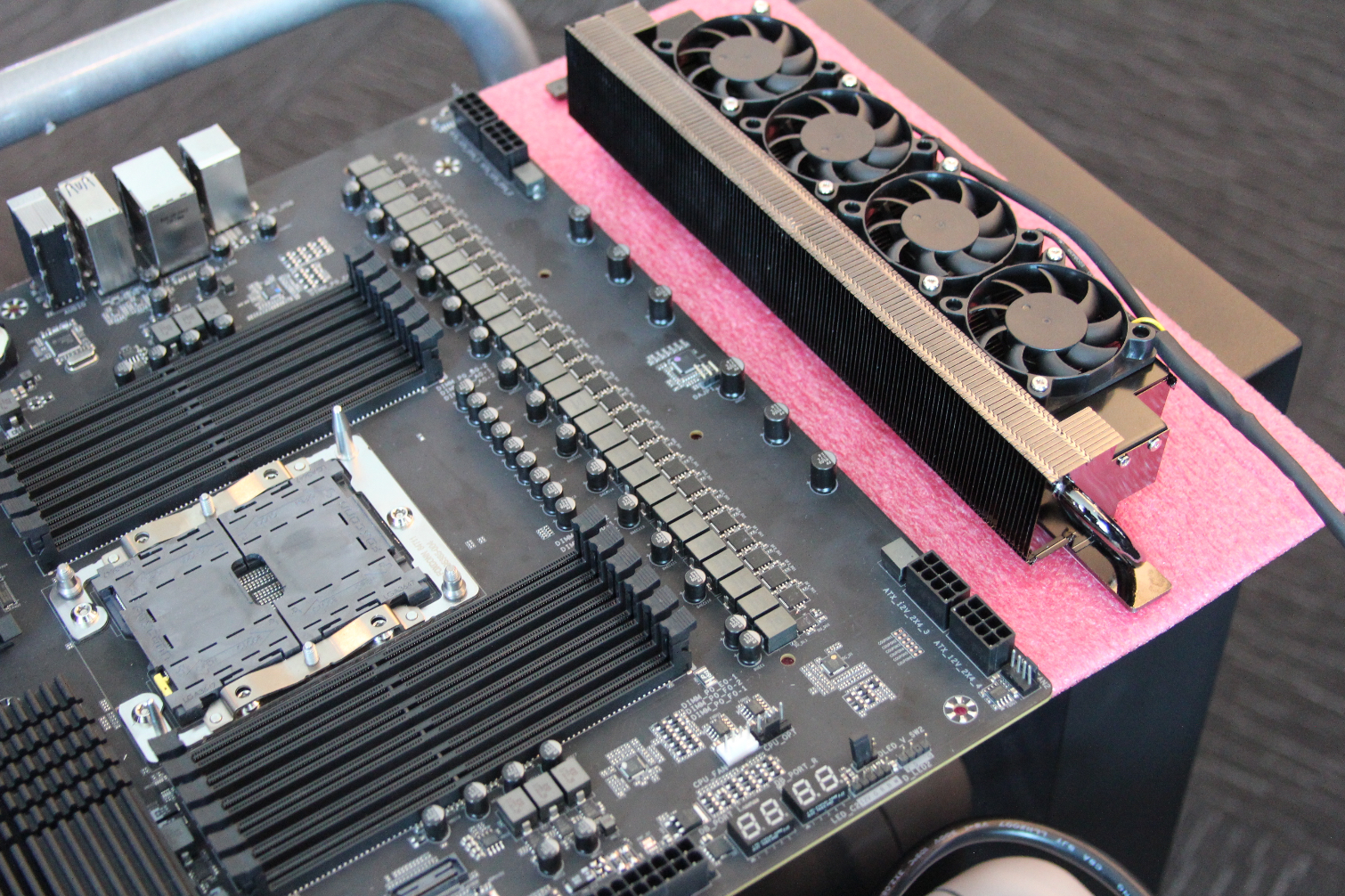

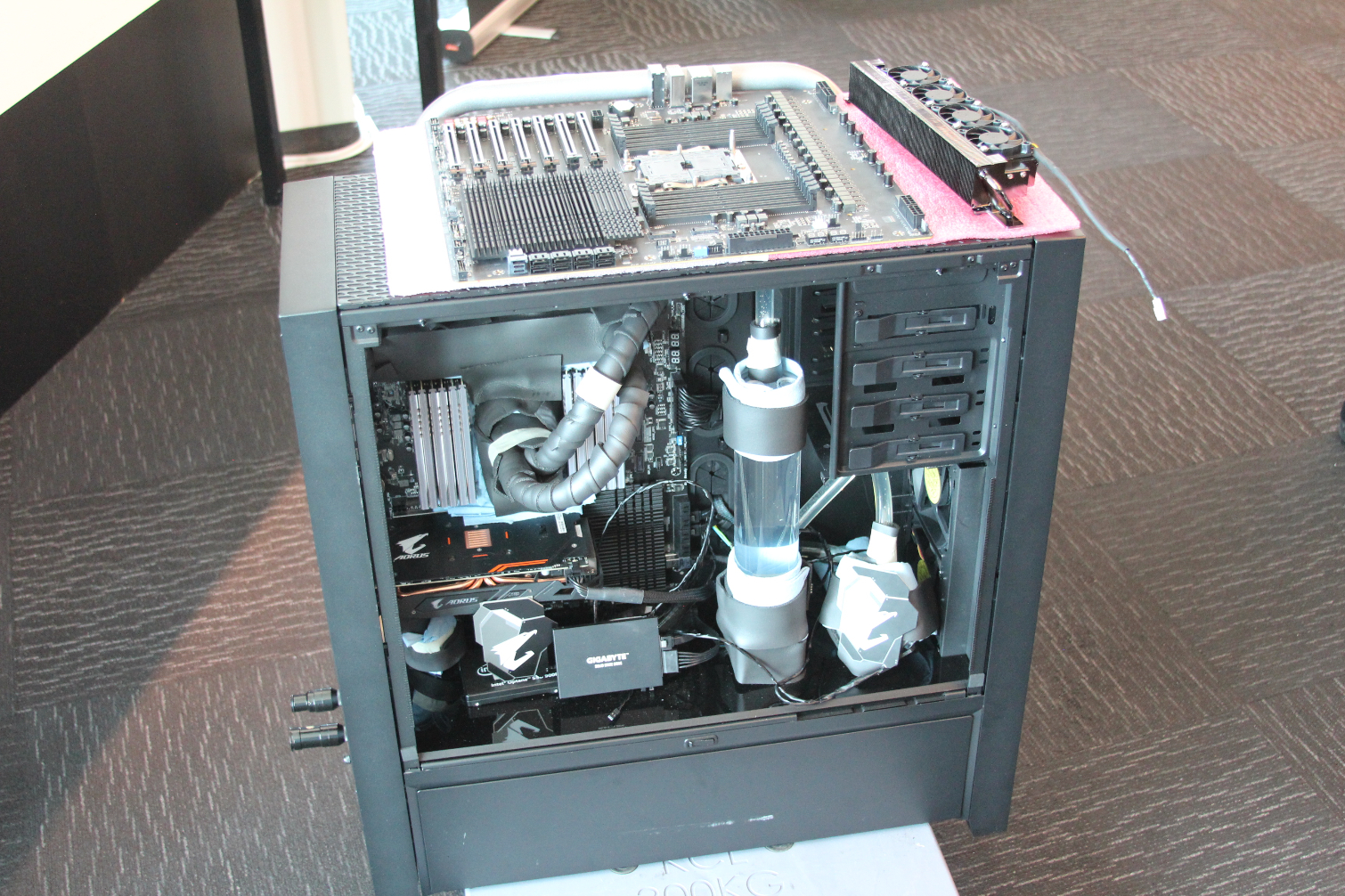
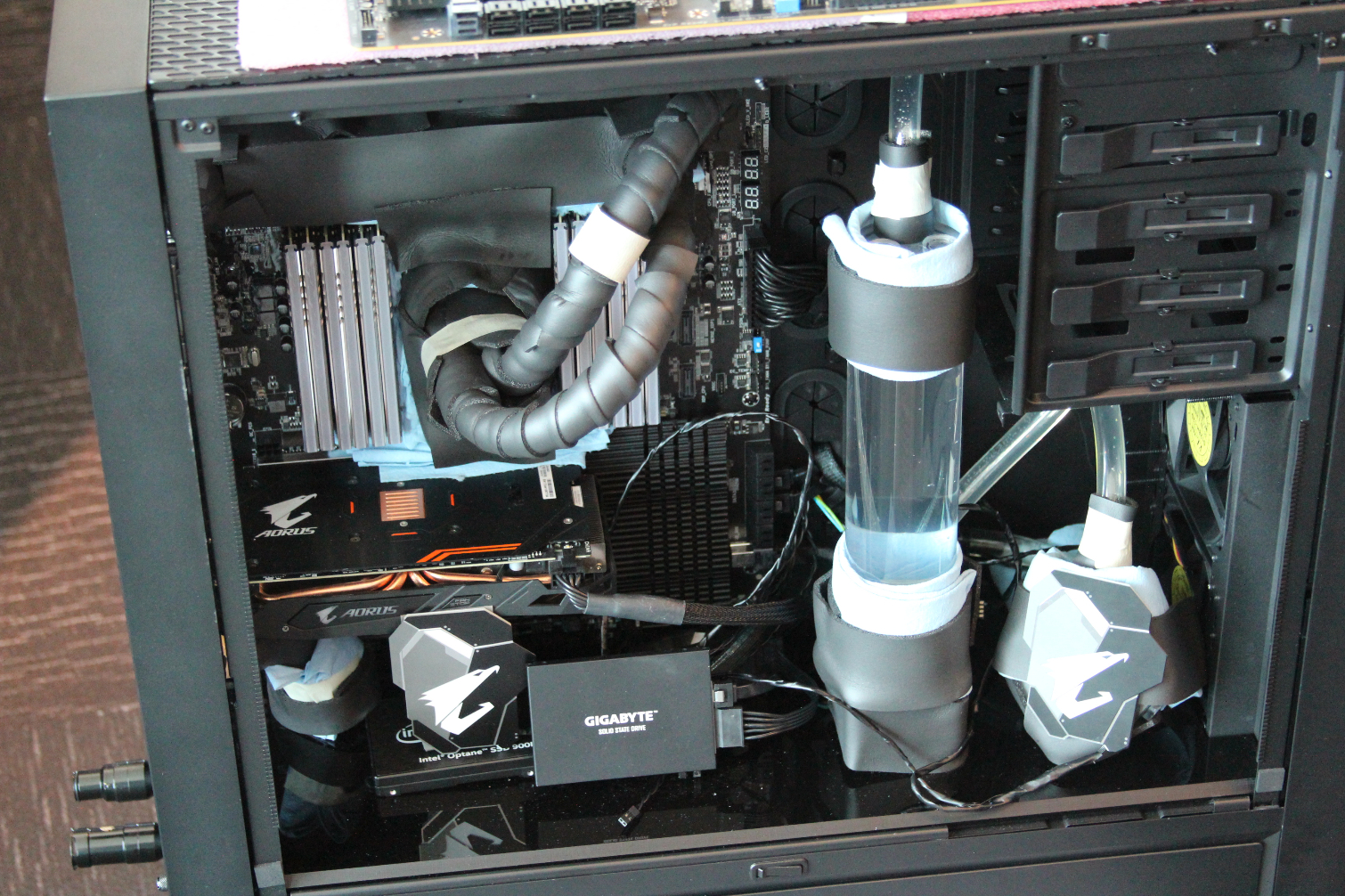
We tracked down the test system the next day and did the full deep dive analysis in our Intel's 28-Core 5GHz Processor And Test System Breaks Cover article. We learned that Intel had in fact used a water chiller to push the processor to 5GHz, which confirmed our suspicions.
It certainly wasn't a garden-variety chiller, though. The industrial one-horsepower Hailea HC-1000B can pull a peak of 1000W alone, which is a shocking amount of cooling power for a processor that Intel positioned (by omission) as a chip coming to market at 5GHz. We also learned that the test system required a 1300W power supply, so total system power draw for the demo could stretch up to 2300W. In fact, the hideous amount of juice required to power the demo system prevented our contacts from showing us the performance demo privately: The area we were in simply didn't have enough dedicated circuits for the task.
We also asked Intel for clarification of the target market for the processor. This 28-core design is likely a variant of Intel's $10,000 28-core Xeon Platinum Scalable 8180, so it's certainly a stretch to market it to gamers and enthusiasts. However, Intel's graphic showed a young person wearing a gaming headset, which implies the processor is for gamers.
However, that isn't the case. Intel told us the 14nm chip would target the professional workstation market, so it certainly won't be an X-Series part. Instead, the company hasn't decided what series the processor will fall into, and might even create another tier for it. We weren't given a price range for the processor, but it will obviously be far above a normal gamer's budget.
In either case, if you've ever used a beefy water chiller or phase-change unit like we regularly do, you're accustomed to a lot of noise. These units can be extremely loud, so we often use long tubes to run our unit in another room while we test. In its specifications document, Hailea doesn't list the decibel rating for the industrial water chiller Intel used for the demo, but we learned from our contacts that it easily generates more than 50dBA. According to decibel charts, this is roughly the noise level of a large outdoor air conditioner. Naturally, we would expect some of this noise to bleed over to the presenters' microphones, thus amplifying it to the crowd, but we couldn't hear the chiller running during the demo.
We assume Intel placed the chiller in the case underneath the system, so it's possible the company had to add at least some sound-reducing material inside the box. It's also possible that the presenters' unidirectional microphones were good enough to keep the sound of the chiller from coming out over the speaker system, but we think there was probably some form of soundproofing involved.
Companies always try to game demonstrations to some extent. Overall, Intel's demo setup isn't too far out of bounds for what we expect from tech demonstrations. There's always some detail or information left out, or some type of system gaming to squeeze out the best performance under unrealistic scenarios. That applies to many companies the world over, and not "just" Intel.
According to Intel, the accidental omission of a single word skewed the entire demo. For now, the popular sentiment is that Intel is pushing the boundaries of the demo game a bit too far as it competes fiercely with the resurgent AMD. In this case, we think Intel's demo disaster was a bit of both.

Paul Alcorn is the Editor-in-Chief for Tom's Hardware US. He also writes news and reviews on CPUs, storage, and enterprise hardware.
-
bit_user Reply
Paul, thanks for this.21038210 said:We met with Intel and asked a few pointed questions about its now-infamous 28-core CPU demo.
I wish the original coverage had been worded a bit more skeptically, but I realize you guys are stretched pretty thin to keep up with everything at the Computex show. -
GR1M_ZA HAHAHAHA...."forgot". Yes lets say we forgot so everybody will forget we <mod edit> up. Intel is tripping over its own feet due to AMD's news products. They were the market leader for so long that they did not have to do anything new to stay there. They are still market leader but good on AMD for throwing them off balance and making them scurry.Reply -
derekullo To be fair anyone who would care that the processor was using an "elaborate" cooling system already knew this.Reply
My estimate was 710 watts extrapolating from other Intel models. -
GR1M_ZA Reply21038331 said:Anyone with a brain knew it was overclocked. AMD fanboys are exaggerating the issue when Zen itself is terrible for overclocking.
Intel fan boy much? Nowhere in the article is it mentioned about AMD and Ryzen OC.
-
giovanni86 This is a win for AMD. Intel lying out there teeth. Just like last years fiasco. They know there digging there grave with this. Its ok Intel we get you. You still have the speed, but not much of it. There credibility is swaying. I've been rocking Intel for a decade now and even im displeased with there efforts to make even a slight good effort for the industry and community as a whole. Looks like more Market share for AMD being honest and forth coming with there efforts.Reply -
philipemaciel Intel did nothing wrong. In fact, my 48 core, 6GHz processor* uses the same coolerReply
* I forgot to mention it does not exist -
ubercake Spectre, Meltdown, "forgetting"... Really makes you question the integrity of a company. Who cares if the 28 cores ran slower? You have to question the leadership of that company. That's top-down BS.Reply -
aswindamara But it's still insane tho? 5Ghz All Core Like the First Image? I can't imagine how much Voltage that they used, and With Crazy Cooling, Is that Nitrogen Cooler?Reply -
Keuric So..Reply
Why not call this like it is? Intel lied. They lied to journalists, so you'd deceive readers and report bad information. "Forgot" in quotes suggests you know they lied. Do you like being a sock puppet for suppliers, and then having to walk it back?
"Intel Knowingly Lied to Everyone at Computex About Their So-Called 5GHz 28-Core Processor." There, I've given you the headline.
Intel wanted to steal some thunder from AMD. It's that simple. -
JimmiG Hardly surprising. This wasn't a new product, it was a rebadged 28-core Skylake X Xeon. Those don't do 5 GHz with any kind of normal cooling.Reply
